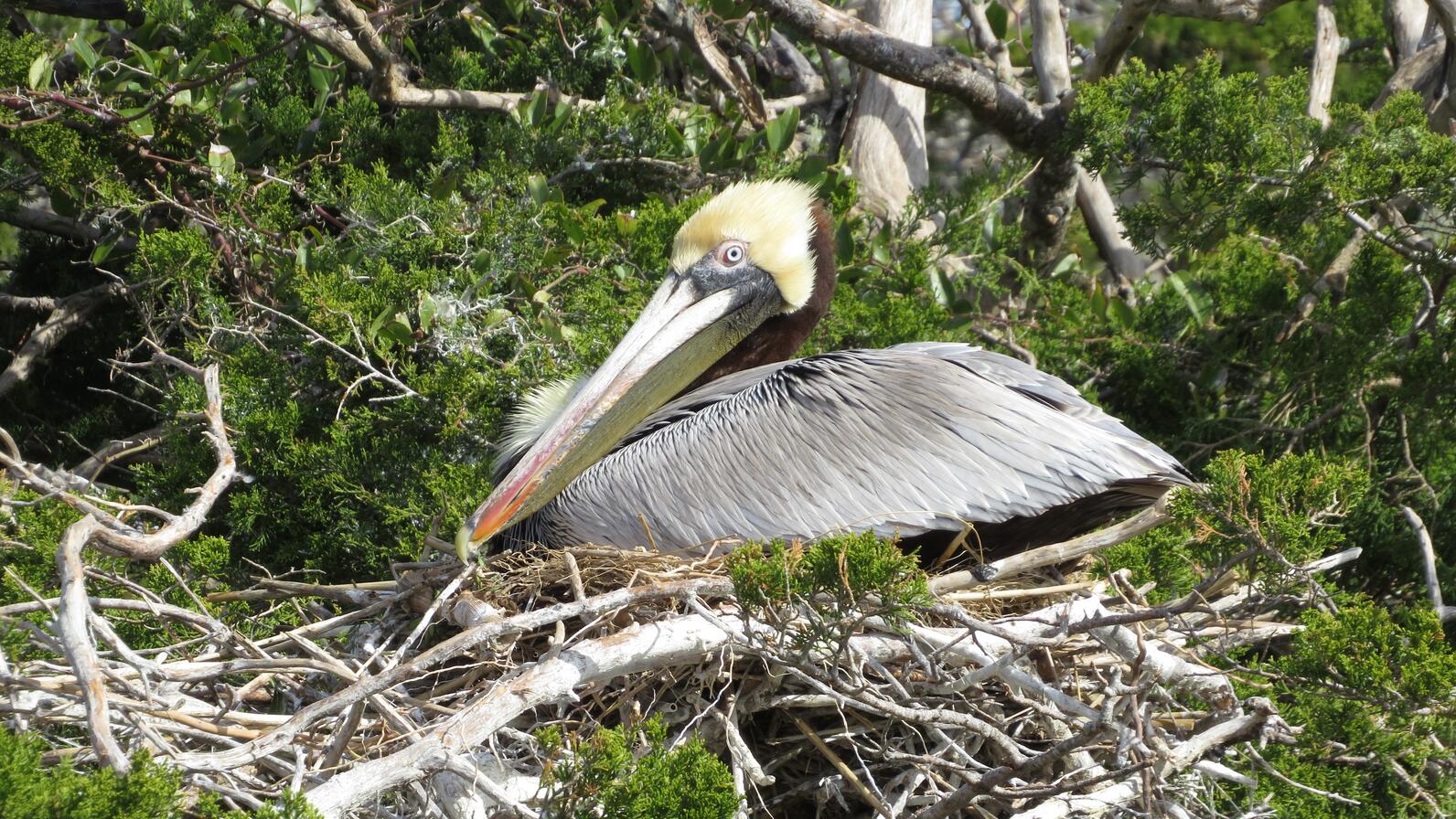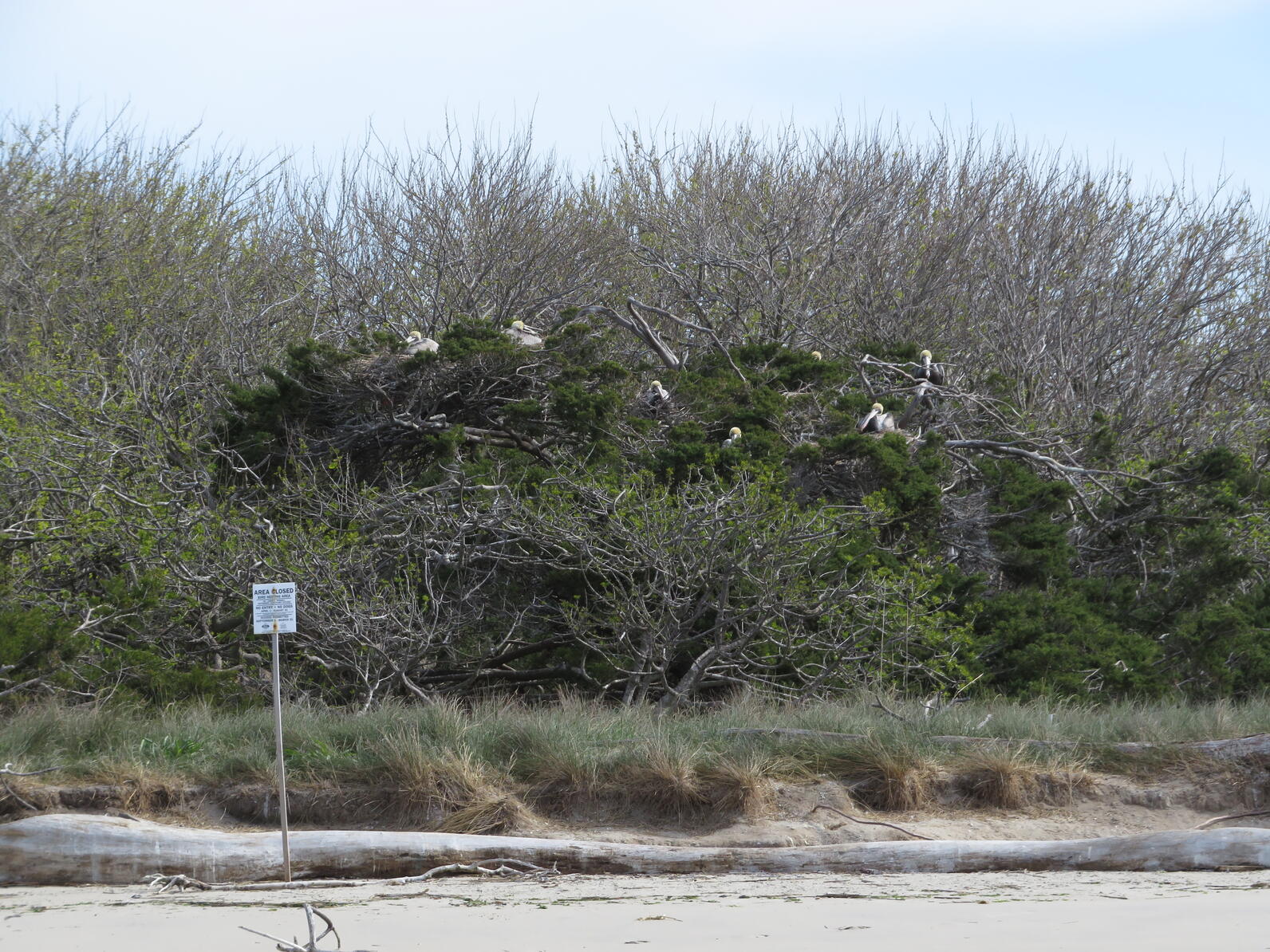The summer beach season may seem a ways off, but North Carolina’s coastal birds are already returning from their winter vacations.
On the Cape Fear River, Brown Pelicans, Great Egrets, and American Oystercatchers have laid clutches of eggs. At Lea-Hutaff Island, an undeveloped barrier island near Wilmington, we just got our first report of tiny, acrobatic Least Terns returning to nest, after long flights from their wintering grounds in the Caribbean.
This timing is normal, and a big part of the reason that the N.C. Wildlife Resources Commission recently changed the annual nesting sanctuary closure window. Nearly 900 Audubon members wrote in to support the commission’s proposal, which lengthened the window so that closures now begin March 1 and end Sept. 15.
Nesting Underway
This new timeline better lines up with when coastal birds actually begin building nests and, at the end of the season, fledge chicks.
For example, we saw our first Brown Pelican sitting on a nest at Battery Island on the Cape Fear River the second week of March. Pelicans had already been cruising across the river with sticks in their bills weeks earlier, using the branches to build large, circular nests on the ground and in trees.

Elsewhere, birds are still working on their nests and just beginning to court their mates. At Lea-Hutaff Island, oystercatchers and Wilson’s Plovers are busy digging out small scrapes in the open sand, where they will eventually lay eggs.
The island is regularly home to some of the largest Least Tern colonies in the state. These tiny, black-capped seabirds have also returned and are already doing their courtship displays, which include catching fish and presenting the prize to a prospective mate with a deep bow.
As we enter the nesting season, and with a busy summer of tourism just around the corner, remember that coastal birds need space to successfully hatch their eggs and raise young.
Share the Shore

With the help of volunteers, our staff has already posted nesting sanctuaries from the Cape Fear River to Pamlico Sound.
The postings help keep people and their dogs away from birds during one of the most vulnerable times in their lifecycles.
Species like Least Terns are easily scared off their nests and away from chicks when people get too close. This can be dangerous for the chicks, which depend on their parents’ constant presence to help regular body temperature and keep them safe.
If you’d like to get a close look in the company of an expert, consider visiting our sanctuary at the south end of Wrightsville Beach. Guided bird walks begin in May and occur weekly through the summer.









